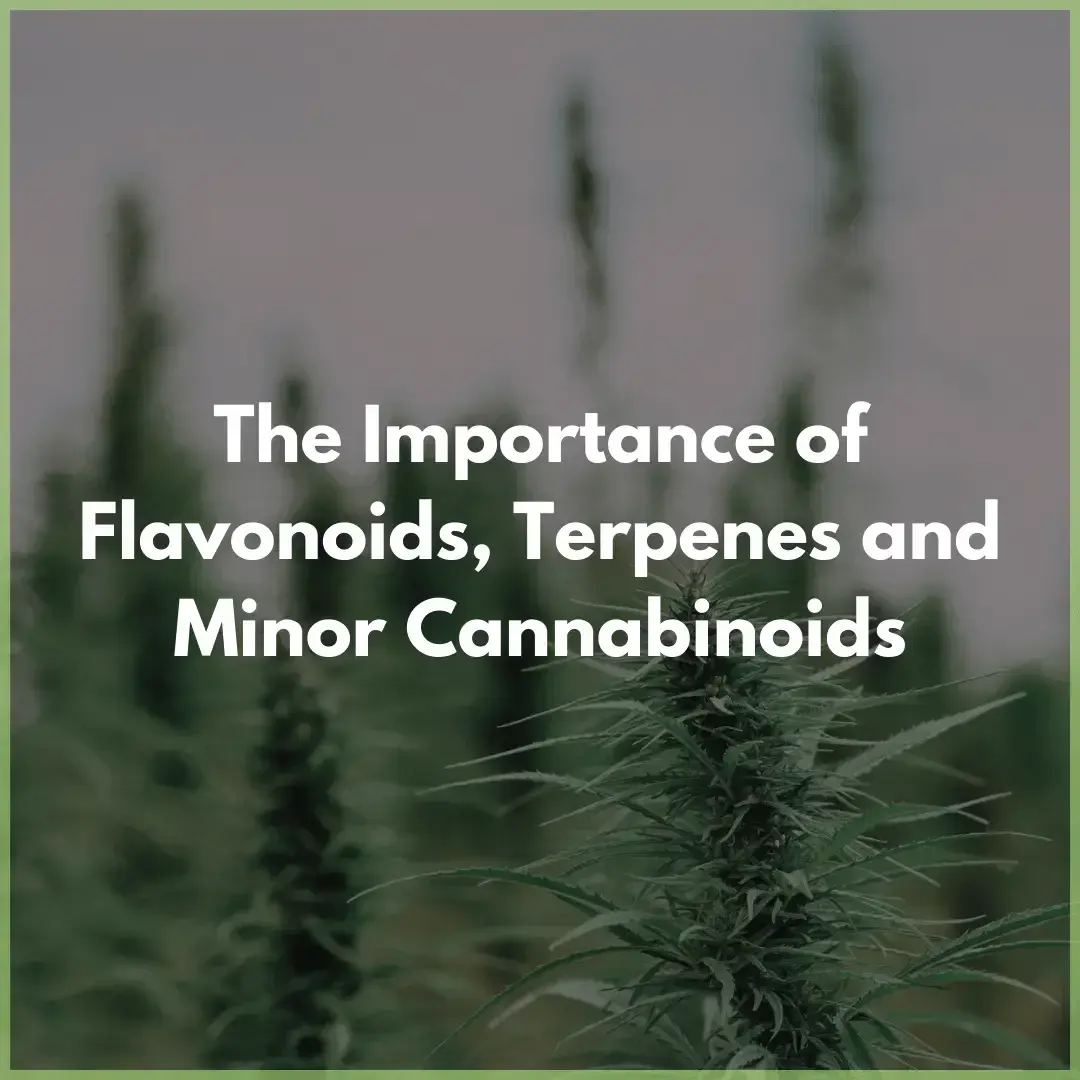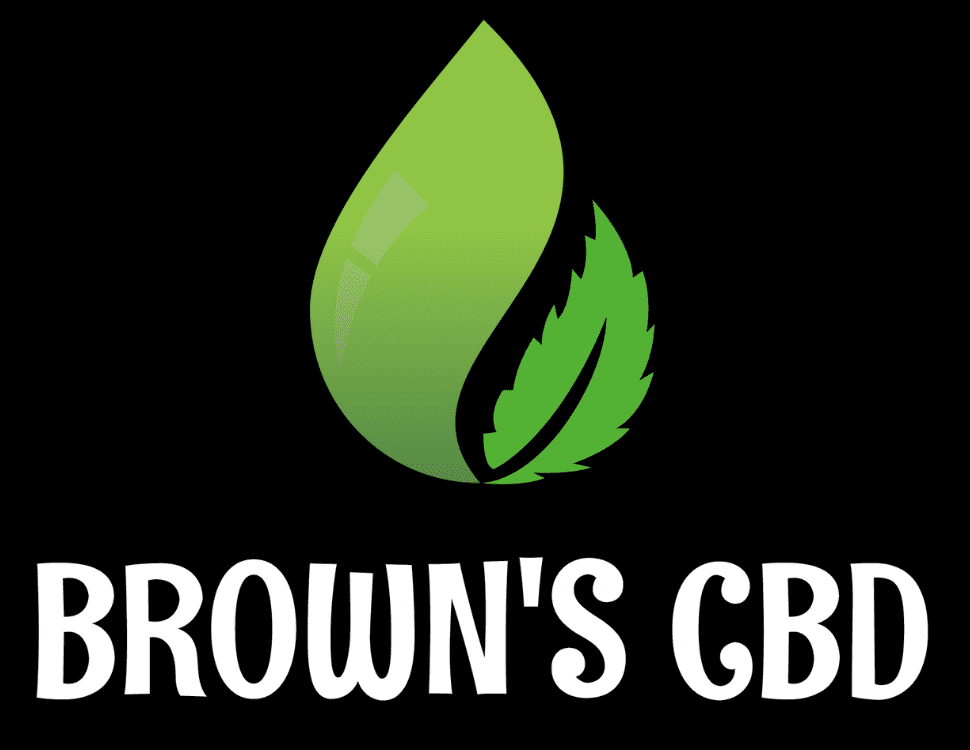
If you’re reading this, you probably already know that Hemp produces CBD. But did you know that there are hundreds of other compounds in the plant that may have beneficial health effects? In this article, we will dive into the world of flavonoids, terpenes, and minor cannabinoids so that you can make an informed decision when buying CBD products.
What Are Flavonoids?
Have you ever wondered why, when consumed in moderation, red wine and dark chocolate are touted as being healthy despite the former containing alcohol and the latter containing sugar? Well, flavonoids are the answer.
Flavonoids are compounds produced by plants to deal with aspects such as environmental stress, regulating cell growth, and attracting pollinating insects. But many of them also happen to be biologically active in humans and can have multiple health benefits.
In fact, preliminary studies have indicated that some of these compounds may have anticancer, antiinflammatory, antidiabetic, antithrombogenic, and neuroprotective effects. This could be a key contributing factor to why many fruits and vegetables are so healthy.
The richest sources of dietary flavonoids are fruits, vegetables, cacao, coffee, wine, and tea. But did you know that over 20 different flavonoids can be found in the hemp plant?
When CBD Hemp Oils are full spectrum, which means they preserve all of the compounds present in the plant, they naturally contain these flavonoids. However, many products currently available are highly refined and have these compounds stripped from the extract.
What Are Terpenes?
In our opinion, terpenes are among some of the finest natural compounds around. That’s because they are responsible for the wide array of wonderful aromas that plants produce.
Whether it’s calming lavender, fresh citrus, uplifting pine, or floral tones that tickle your olfactory fancy – you can thank terpenes. They are in fact the building blocks of essential oils, meaning essential oils are ‘essentially’ made up of varying levels of different terpenes.
As with flavonoids, these compounds perform specific tasks for plants such as attracting pollinators and repelling enemy species. And again, they can benefit human health through various biological mechanisms.
The specific health benefits of some terpenes are similar to those of flavonoids but can vary depending on the terpene in question.
Many terpenes are shared between different plant species. The following terpenes, for example, are abundant both in hemp and other common plants:
- Limonene – citrus aroma highly concentrated in lemons.
- Pinene – the typical aroma of pine trees.
- Linalool – a contributing terpene to the smell of lavender.
- Myrcene – a key terpene in hops that is often experienced in craft beer.
- Beta-caryophyllene – a more spicy terpene abundant in black pepper and clove.
In the world of cannabis, varying levels of different terpenes are what give different cannabis strains their unique smells. That pungent aroma that you sometimes smell at your local park coming from the group of teens – terpenes, and the plant contains over 100 of these.
Some preliminary studies have shown that cannabis terpenes may actually enhance the effects of cannabinoids such as CBD, and help them stay in the bloodstream for longer. Anecdotally, many users swear by terpenes for influencing and strengthening the effects of cannabinoids.
Beta-caryophyllene is a particularly interesting compound as it is both a terpene and a cannabinoid, meaning that it interacts with our endocannabinoid system – more on that in the next section.
What Are Minor Cannabinoids?
Cannabinoids are compounds that have been found to interact with the endocannabinoid system. The richest natural source of these compounds is Cannabis, hence the name.
The endocannabinoid system (ECS) is a biological cell-signaling system that is intimately involved in regulating vital bodily functions such as the immune system, stress, pain, appetite, memory, sleep, and more.
The two key pillars of this system are endocannabinoids, which are cannabinoids produced naturally by the body, and cannabinoid receptors. These cannabinoids from cannabis, such as CBD, closely resemble cannabinoids naturally produced by the body and as such, they can interact with cannabinoid receptors and influence the functioning of this vital system.
It is through these interactions that scientists believe CBD and many other cannabinoids may lead to positive health outcomes.
Back to the original question – ‘minor’ cannabinoids. Minor cannabinoids are other cannabinoids such as CBC, CBG, or CBDV that are present in hemp but in lower concentrations. The word minor does not mean that their effects are less significant.
While CBD and THC are the stars of the show, there have actually been over 120 cannabinoids identified in hemp, many of which have demonstrated serious health-boosting potential in preliminary studies.
While flavonoids, terpenes, and cannabinoids have all been shown to be individually beneficial, the benefits seem to be amplified when consumed together. This is due to a synergistic relationship known as the entourage effect.
Scientists have observed that many cannabinoids can be significantly more potent when consumed in their natural form than when consumed as isolated compounds.
Here at BROWN’S CBD, the entourage effect is a key factor when it comes to product formulation. We like to ensure that our CBD oil is abundant in natural hemp compounds to provide the best possible effects for the customer.
Not only for the reasons mentioned in this article but also because there are probably many more compounds that are yet to be identified which could contribute to the benefits that people experience.
Please note – as our products are sold as food supplements, we do not make any medicinal claims about the flavonoids, terpenes or minor cannabinoids within them. This article simply outlines the capacity of such compounds, in general, to be potentially beneficial to health.
